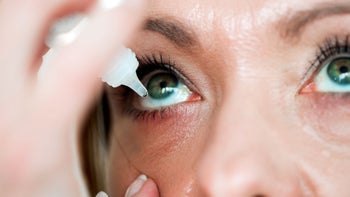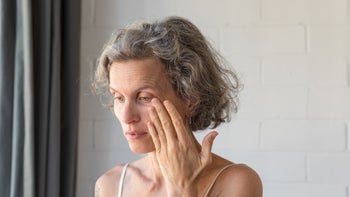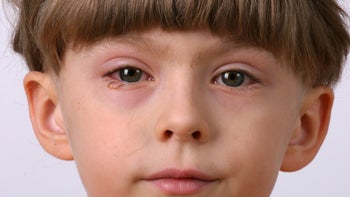
10 Activities to Improve Your Hand-Eye Coordination
Key takeaways:
Hand-eye coordination is your brain’s ability to process visual input from your eyes and send signals to your hands and arms to complete a task.
Age is one of the most common causes of declining hand-eye coordination.
Various exercises and activities can improve your hand-eye coordination.

You may think of hand-eye coordination as something that children develop and athletes perfect. But it's necessary for everyday activities, from getting dressed to driving. In fact, you can thank your hand-eye coordination for anything you do that requires using your hands and eyes at the same time.
Hand-eye coordination is the brain's ability to process input from your eyes and send signals to your hands and arms to complete a task. The complicated process takes less than a fraction of a second. But hand-eye coordination declines with age. The decline may be due to age-related physical and cognitive changes.
Fortunately, you can do something about it. Research suggests that fine motor training exercises can help maintain your hand-eye coordination as you get older. The improvement can help you with everyday activities and help you maintain your independence. It may even enhance your athletic performance. Here are 10 activities you can try to boost your hand-eye coordination.
Search and compare options
1. Add swimming to your routine
Pull out your swimsuit, and grab your towel. Studies show that regular swimming may improve hand-eye coordination and balance. Both of these skills are important, especially as you age. And if that isn't reason enough, the low-impact exercise promotes cardiovascular health and may help ease the pain from arthritis.
2. Practice tai chi
Tai chi is an ancient practice that involves slow movements, meditation, and balance exercises. A study found that doing tai chi three times a week improved hand-eye coordination by 20% after 3 months. Check out your local gym for tai chi classes, or visit the Tai Chi Foundation to find classes near you or online.
3. Play catch
Remember tossing the ball back and forth as a kid? You might want to try it as an adult. Throwing and catching a ball can sharpen your hand-eye coordination skills. Playing catch may help improve your reaction time and processing speed, which are both skills that you need for driving and preventing falls.
You must watch the ball come toward you and quickly process where to move your arm to catch the ball. Then, you must look at your intended target and process where to throw the ball.
Although studies looked specifically at juggling (more on that below), playing catch can also have this same positive effect on hand-eye coordination.
There are other options if you can't play catch with someone. For example, you can throw your ball against a wall or try a standing ball toss. You can make the toss even more challenging by doing it while standing on one leg.
Read more like this
Explore these related articles, suggested for readers like you.
4. Learn how to juggle
Juggling isn't just for entertainment. It's a great way to practice your hand-eye coordination. The activity involves multiple tasks, including moving your arms simultaneously, tracking moving objects, and catching. So it tests your spatial awareness, reflexes, and reaction time. And juggling requires you to think strategically.
5. Solve puzzles
Puzzle play helps children develop fine motor skills and hand-eye coordination. But you can use puzzles to sharpen those skills in adulthood too.
To solve a complex puzzle, you have to focus, recognize patterns, and strategize. You make specific movements, like grasping, that work the small muscles in your hands. Practicing these moves can make it easier to do daily tasks like buttoning your shirt or tying your shoelaces.
And long-term jigsaw puzzle play has been linked to improved cognition. So don't hesitate to grab that 1,000-piece jigsaw puzzle and get to work.
6. Try drawing or painting
Looking for a new hobby? Consider drawing or painting. You can practice hand-eye coordination and get creative with both activities. Plus, learning a new skill keeps your brain sharp and healthy as you get older. And practicing the arts has been shown to improve quality of life among older adults.
7. Learn how to play darts
Don't worry if activities like juggling or drawing don't interest you. There are other options, like playing darts. Throwing darts at a dartboard requires sensory input (vision), motor skills, and cognitive skills. It allows you to practice your hand-eye coordination with targeted throwing.
8. Play video games
They may be controversial, but video games can be a helpful tool for hand-eye coordination. One study compared video gamers who played three times a week to non-gamers. Researchers found that the gamers performed better in a sensorimotor (movement tracking) task than non-gamers.
Sensorimotor learning refers to the ability to use your senses and motor movements to interact with the environment. The study focused on two specific games, but you can choose any video game you like that challenges your hand-eye coordination.
9. Take up sewing or knitting
Sewing and knitting may also improve hand-eye coordination and keep your brain healthy. A study showed that crafting activities like sewing enhance fine motor skills, pattern recognition, and focus.
10. Play racket sports
Playing racket sports –– such as tennis or ping pong –– is a good way to boost hand-eye coordination. These sports involve skilled muscle control and agile movements. They help you practice skills such as depth perception (judging how close or far an object is), peripheral vision (reacting to objects outside of primary vision field), and motor memory (knowing from past experiences when to move or catch an object).
All of these things not only help you on the court, but off of the court as well when you do things like driving, navigating steps, and avoiding obstacles that could cause a fall.
What can impair hand-eye coordination?
Besides your age, vision problems can also affect hand-eye coordination. If you have injuries or conditions that affect your upper body –– such as shoulder tendonitis, carpal tunnel syndrome, or arthritis –– it can also delay or hinder your response time and cause issues.
Conditions that affect movement might also impair your hand-eye coordination, including:
If you notice sudden changes in your hand-eye coordination, talk to your healthcare provider.
The bottom line
Hand-eye coordination is critical for daily activities. But the skill declines as you age. Luckily, several activities –– like juggling and sewing –– have been proven to help. Sharpening your skills can help you remain independent. If your hand-eye coordination declines due to vision problems or an illness, talk to your healthcare provider about a treatment plan.
Why trust our experts?



References
American Association of Neurological Surgeons. (n.d.). Movement disorders.
Berbert, G. (2021). Hand-eye coordination: What is it and 5 exercises to improve it. Neurological and Physical Abilitation.
Botvinick-Greenhouse, J., et al. (2020). Juggling dynamics. Physics Today.
Dessing, J. C., et al. (2012). Gaze fixation improves the stability of expert juggling. Experimental Brain Research.
Fissler, P., et al. (2018). Jigsaw puzzling taps multiple cognitive abilities and is a potential protective factor for cognitive aging. Frontiers in Aging Neuroscience.
Geda, Y. E., et al. (2011). Engaging in cognitive activities, aging, and mild cognitive impairment: A population-based study. The Journal of Neuropsychiatry and Clinical Neurosciences.
Gerber, P., et al. (2014). Juggling revisited—A voxel-based morphometry study with expert jugglers. NeuroImage.
Gozli, D. G., et al. (2014). The effect of action video game playing on sensorimotor learning: Evidence from a movement tracking task. Human Movement Science.
Groppel, J., et al. (2009). Tennis: For the health of it! The Physician and Sportsmedicine.
Guan, J., et al. (2000). The effect of aging on adaptive eye-hand coordination. The Journals of Gerontology, Series B.
Hsu, H. C., et al. (2010). Effects of swimming on eye hand coordination and balance in the elderly. The Journal of Nutrition, Health and Aging.
Huette, S., et al. (2013). Drawing from memory: Hand-eye coordination at multiple scales. PLOS ONE.
Hurley, R. (2006). A steady eye. The BMJ.
Kovar, E. (2016). Coordination exercises for active aging clients. American Council on Exercise.
Kusnanto, K., et al. (2017). Jigsaw puzzle improve fine motor abilities of upper extremities in post-stroke ischemic clients. Jurnal Ners.
LaFee, S. (2015). Aging casefully: 9 things that happen to your body (some aren’t so bad!). UC San Diego Health.
Lazarus, R. (2021). Hand-eye coordination. Optometrists Network.
Lee, K. Y. T., et al. (2015). The effects of practicing sitting Tai Chi on balance control and eye-hand coordination in the older adults: A randomized controlled trial. Disability and Rehabilitation.
Lees, A. (2003). Science and the major racket sports: A review. Journal of Sports Sciences.
National Ataxia Foundation. (n.d.). What is ataxia?
National Institute of Neurological Disorders and Stroke. (2021). Dystonias fact sheet.
National Institute on Aging. (2019). Participating in the arts creates paths to healthy aging.
National Science Foundation. (2014). Complexity of eye-hand coordination.
Navarro, J., et al. (2020). On the nature of eye-hand coordination in natural steering behavior. PLOS ONE.
Noice, T., et al. (2014). Participatory arts for older adults: A review of benefits and challenges. The Gerontologist.
Rizzo, J. R., et al. (2020). The complexity of eye-hand coordination: A perspective on cortico-cerebellar cooperation. Cerebellum & Ataxias.
ScienceDirect. (2014). Eye-hand coordination.
Seidler, R. D., et al. (2010). Motor control and aging: Links to age-related brain structural, functional, and biochemical effects. Neuroscience and Biobehavioral Reviews.
Smirnov, A. S., et al. (2019). Dart throwing with the open and closed eyes: Kinematic analysis. Computational and Mathematical Methods in Medicine.
Swartz, R. (2018). Five things children gain from puzzle play. Illinois Early Learning Project.
Szabo, D. A., et al. (2021). Study on the influence of proprioceptive control versus visual control on reaction speed, hand coordination, and lower limb balance in young students 14–15 years old. International Journal of Environmental Research and Public Health.
Tai Chi Foundation. (n.d.). Home.
UC Health. (2019). The neuroscience behind hand-eye coordination for tennis players.
Vidal, F., et al. (2015). Basics for sensorimotor information processing: Some implications for learning. Frontiers in Psychology.




























